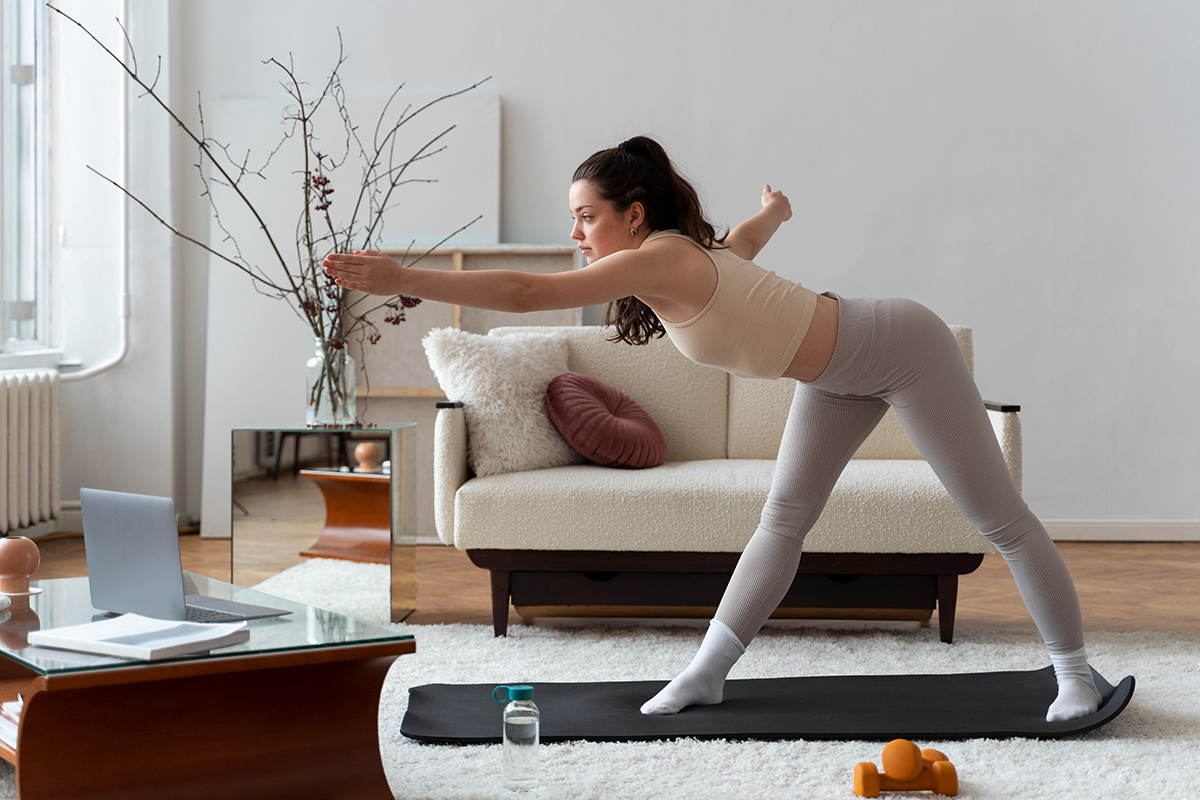Bodyweight training is a versatile way to stay fit. It requires no expensive equipment or gym memberships and helps develop strength, endurance, coordination, and flexibility. Here are the main benefits of bodyweight training and examples of effective exercises for different muscle groups.
Benefits of Bodyweight Training
Bodyweight exercises offer numerous advantages, making them popular among individuals of all fitness levels.
Accessibility and Cost Savings
These exercises require no equipment or gym memberships. All you need is a little space at home, in your backyard, or in a park. This makes bodyweight training ideal for those looking to stay fit without spending extra money.
Functionality
Bodyweight workouts engage multiple muscle groups simultaneously, promoting balance and coordination. They mimic natural body movements, making them highly beneficial for everyday activities.
Suitable for All Fitness Levels
Bodyweight exercises can be adapted to any fitness level. Beginners can start with basic variations, while advanced athletes can increase the difficulty by adding resistance or complexity.
Safety
Since the load is controlled by your own body weight, the risk of injury is lower compared to training with heavy weights. This makes these exercises suitable for rehabilitation and older adults.
Key Bodyweight Exercises
There are plenty of exercises you can do without equipment to build strength and endurance while targeting different muscle groups.
Lower Body Exercises
Squats
This foundational exercise strengthens the legs, glutes, and core. Stand upright with your feet shoulder-width apart. Lower your body by bending your knees and pushing your hips back as if sitting on a chair. Keep your knees behind your toes and your back straight. Perform 3 sets of 12–15 repetitions.
Lunges
Lunges target the quadriceps, glutes, and hamstrings. Step forward with one leg, bending both knees until the back knee nearly touches the floor. Return to the starting position and repeat with the other leg. Do 3 sets of 10–12 repetitions per leg.
Calf Raises
This exercise strengthens the calf muscles. Stand on a flat surface, lift your heels to stand on your toes, hold for a few seconds, and lower back down. Perform 3 sets of 15–20 repetitions.
Upper Body Exercises
Push-Ups
Push-ups work the chest, shoulders, and triceps. Start in a high plank position with your hands slightly wider than shoulder-width apart. Lower your body by bending your elbows and then push back up. Beginners can perform push-ups on their knees. Do 3 sets of 10–15 repetitions.
Tricep Dips
This exercise focuses on the triceps. Sit on the edge of a chair or low bench with your hands next to your hips. Slide forward and lower your body by bending your elbows, then push yourself back up. Perform 3 sets of 10–12 repetitions.
Plank
The plank strengthens the core, back, arms, and shoulders. Hold a forearm plank position, keeping your body in a straight line from head to heels. Maintain the position for 30–60 seconds and repeat for 2–3 sets.
Core Exercises
Crunches
Lie on your back with your knees bent and hands behind your head. Lift your upper body off the floor, engaging your abdominal muscles, and lower back down. Perform 3 sets of 15–20 repetitions.
Leg Raises
Lie on your back with your arms by your sides. Lift your straight legs upward and lower them slowly without touching the floor. This exercise targets the lower abs. Do 3 sets of 12–15 repetitions.
Mountain Climbers
Begin in a high plank position and alternate bringing your knees toward your chest at a fast pace. This exercise builds endurance and strengthens the core. Perform 3 sets of 30 seconds.
Tips for Effective Workouts
Consistency
Train 3–5 times a week, focusing on different muscle groups during each session.
Progression
Gradually increase repetitions, sets, or exercise difficulty. For example, add jumps to squats or elevate your feet during push-ups.
Warm-Up and Stretching
Begin each workout with a warm-up to prepare your muscles, and finish with stretches to reduce injury risk and speed recovery.
Listen to Your Body
Avoid overexertion and adjust exercises to your fitness level. If you experience pain or significant discomfort, take a break and review your form.
Regular bodyweight training helps you achieve your fitness goals, improve your health, and enhance overall well-being.


